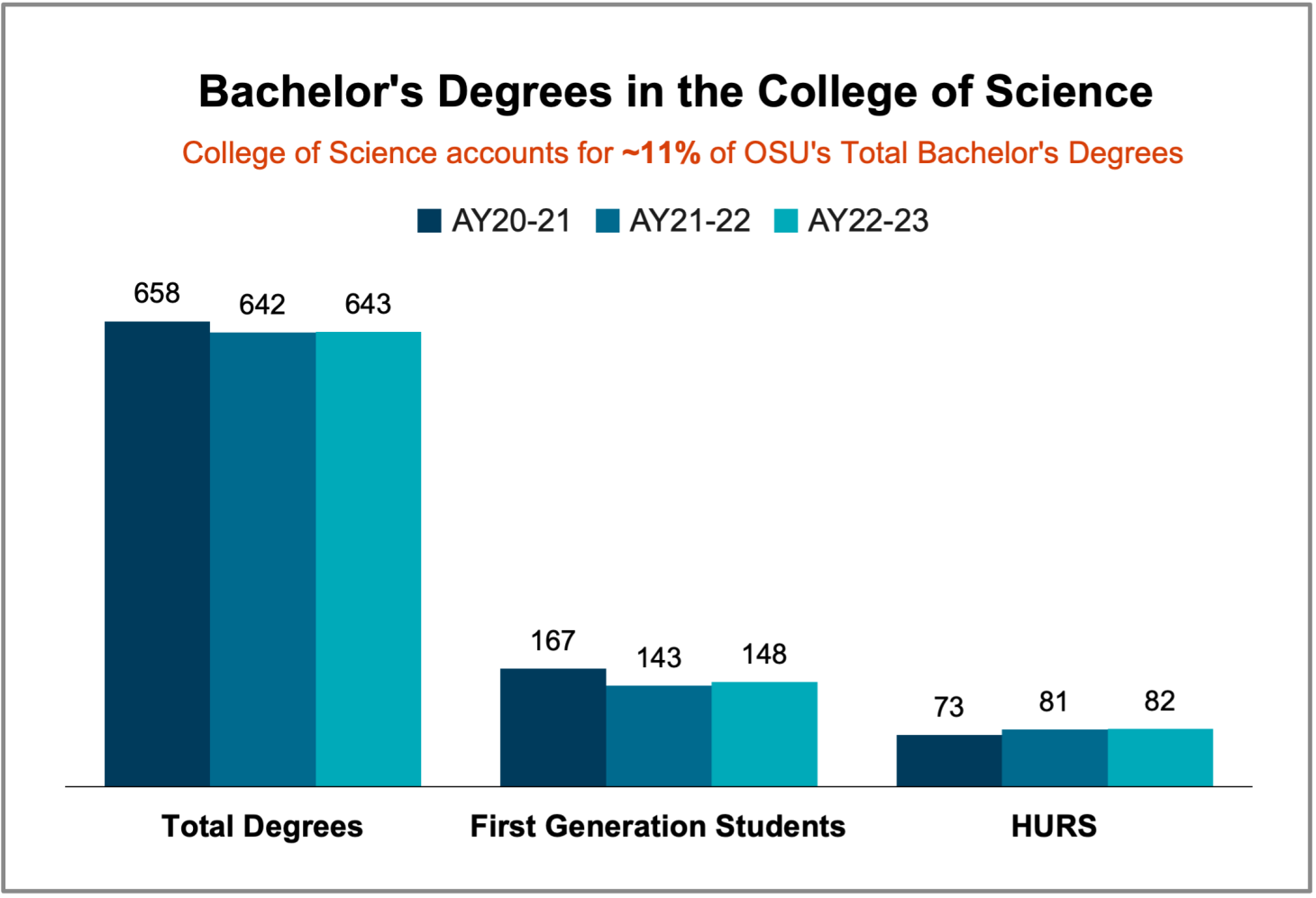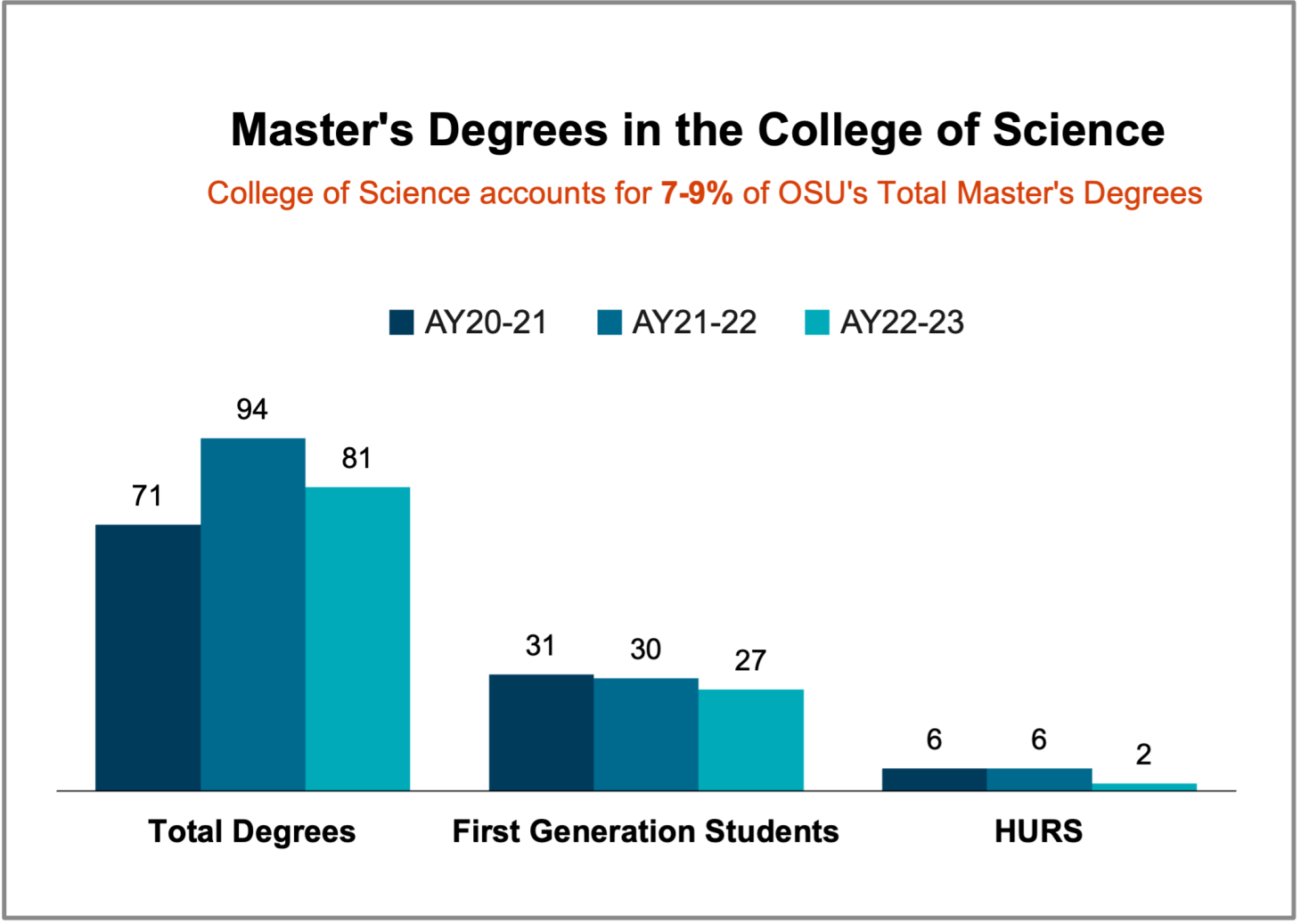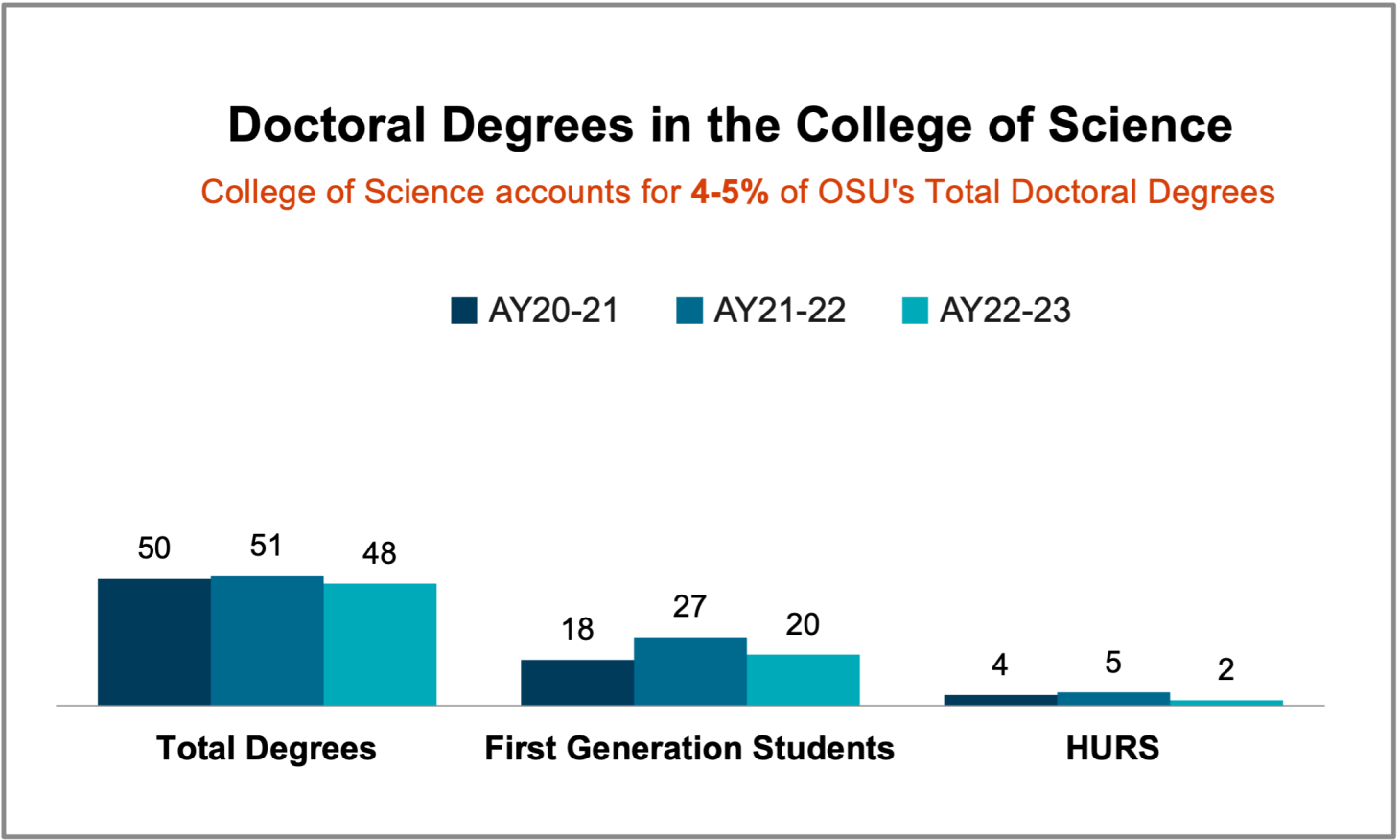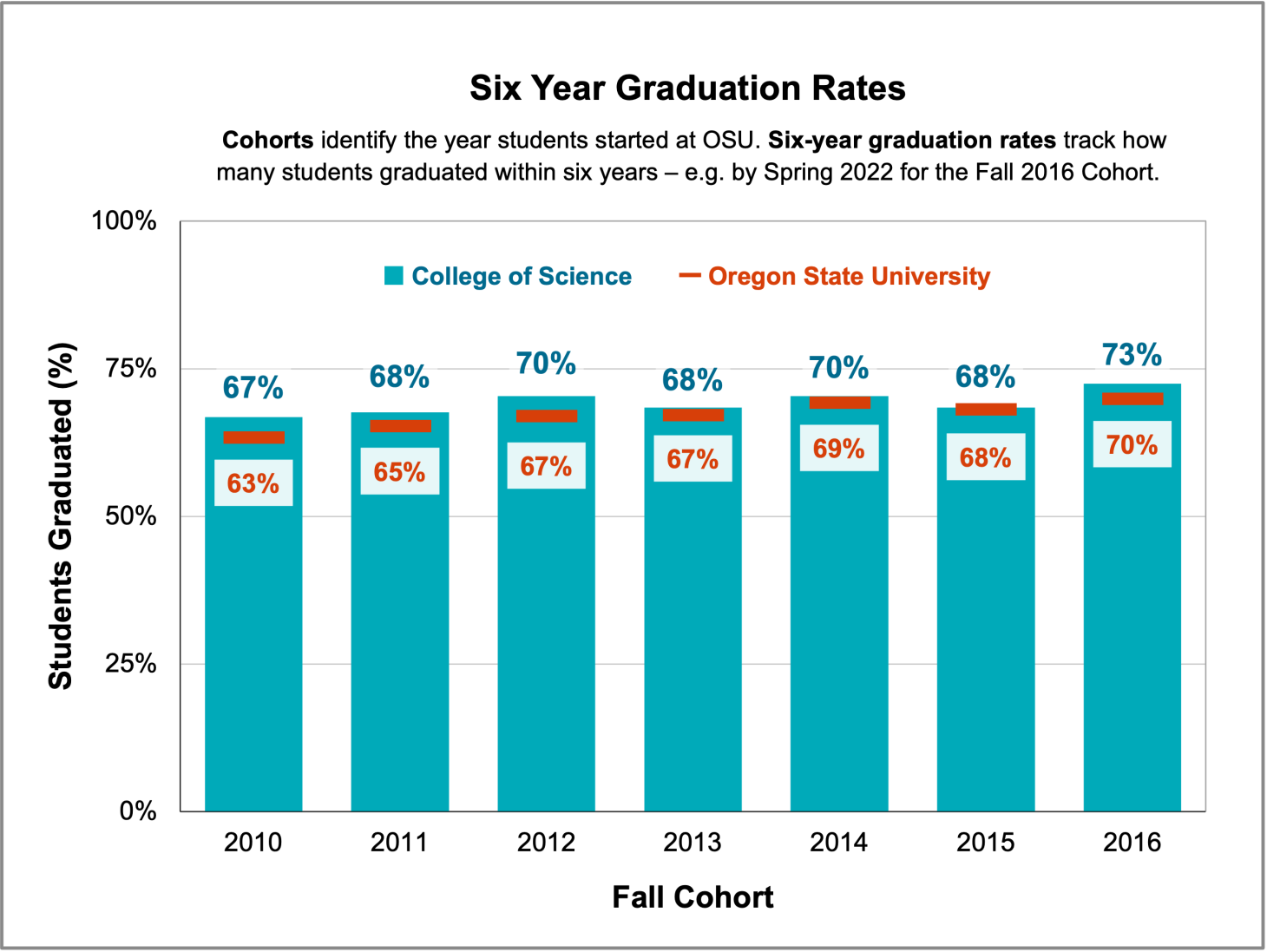Description
Chart 3.2.1 shows the First Year Retention Rates in the College of Science of Fall Cohorts from 2016 through 2021.
The Fall Cohort identifies the year students started at OSU.
First year retention rate is the percentage of first-time, first-year undergraduate students who continue on in the same program the following fall.
The chart shows the College of Science’s first year retention rates compared to Oregon State University as a whole. First year retention in the College has met or exceeded that of OSU in four out of the past six years and has been within one percentage point the other two years.
Data
First year retention rates for each cohort.
In the following, COS stands for College of Science
- Fall 2016 Cohort: 84.0% COS and 84.8% OSU
- Fall 2017 Cohort: 85.4% COS and 84.2% OSU
- Fall 2018 Cohort: 87.5% COS and 85.4% OSU
- Fall 2019 Cohort: 84.3% COS and 84.5% OSU
- Fall 2020 Cohort: 87.3% COS and 86.8% OSU
- Fall 2021 Cohort: 86.5% COS and 86.5% OSU









